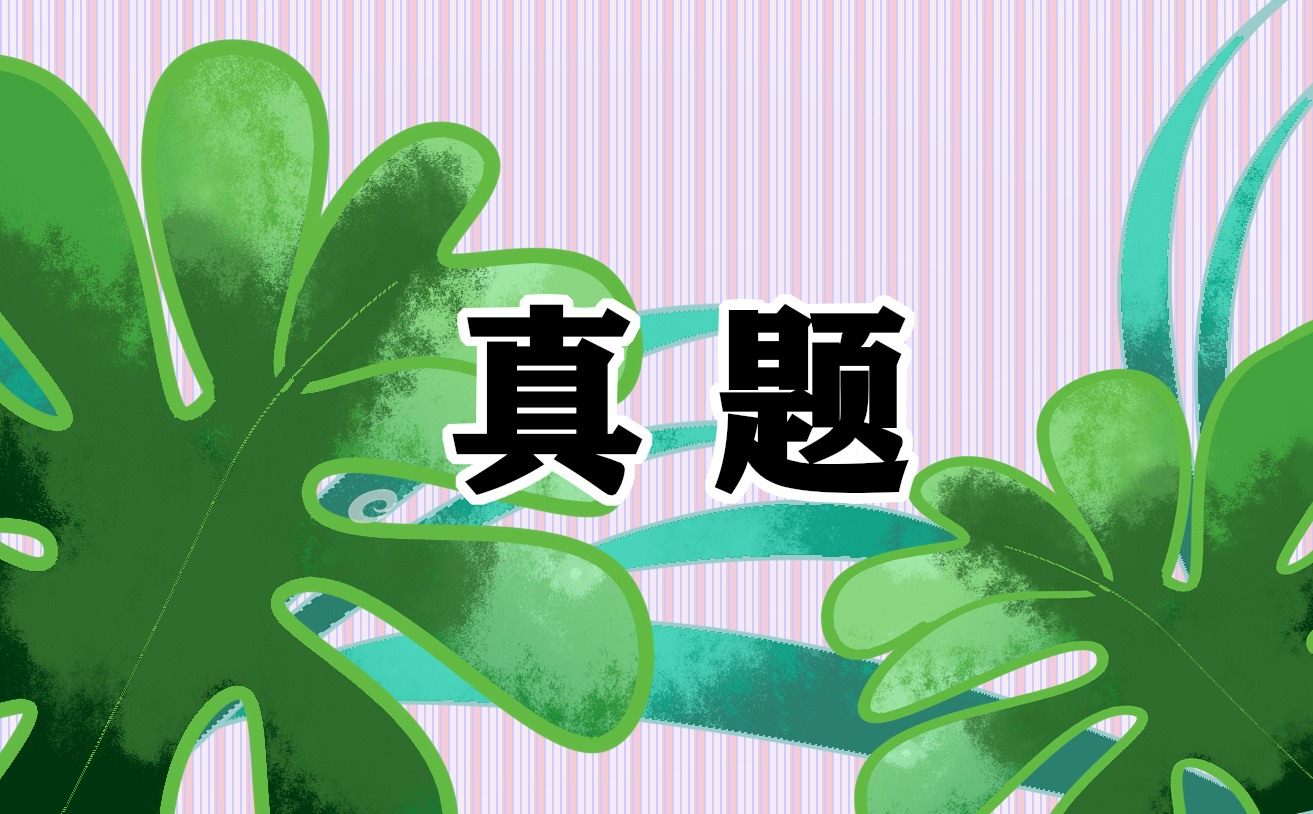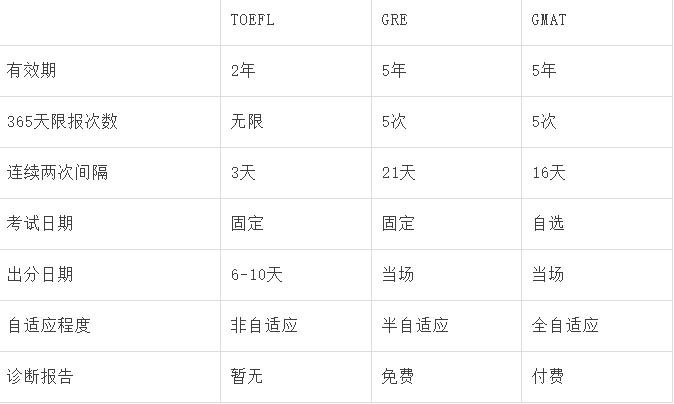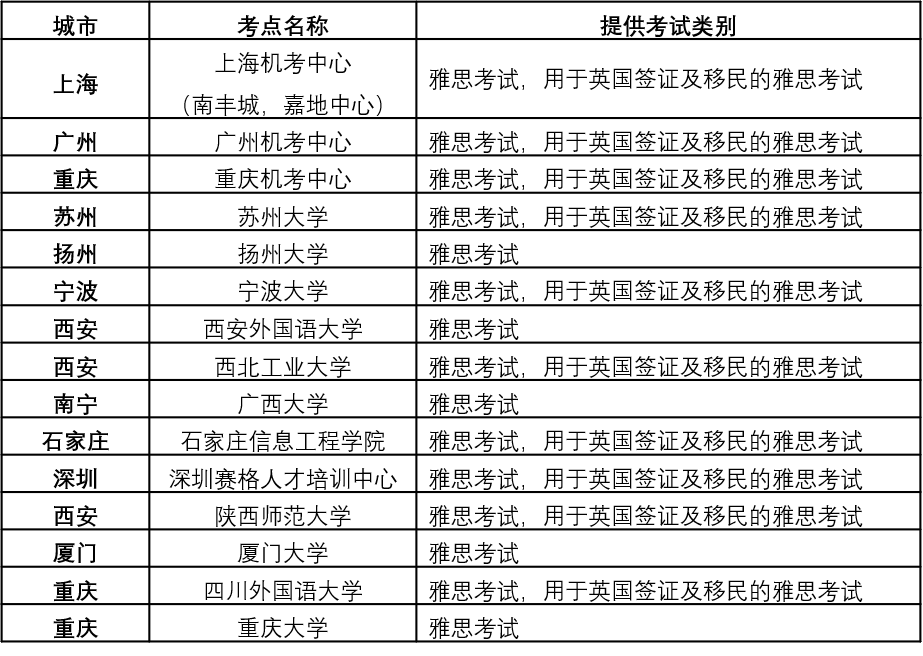雅思口语考试需要一定的步骤和过程,只有按照这个过程,才能让自己的分数更高。今天小编给大家带来了雅思口语的流程 ,希望能够帮助到到大家,下面小编就和大家分享,来欣赏一下吧。
雅思口语的流程 名师带你看
雅思口语考试流程一,introduction and interview部分。它主要可以划分成2个部分在这个小项里面,一呢在初考官会问你一些基本的,二就是确定你身份的问题,比如说他会问道,你的名字是什么?
雅思考试口语考试流程二,Personal long-turn部分。这主要是在一部分的这个交流以后呢?大肯定是会进到大叫的二部分,而此Personal long-turn,这个Personal long-turn来说,大部分学生也许还不清楚意思是什么,那我们还会获得一张A4大小的纸,那在这个纸上你会有一个题目,那也许是介绍有关人,又或是一个地方,又或是一个事情,还或者是一个东西的一个题目,那下面你会有一些提示的问题,根据这个问题,考生有一分钟的时间去做准备,然后两分钟的时间咱们需要自己来喋喋不休的来说一个整段的话,那这段话呢我们必须围绕着我们这个题目所给出的内容来回答。同学们也可以相应的做一些展开。
雅思口语考试流程三,Two-way discussion部分。大在这个二部分的Personal long-turn之后呢,肯定就进入了三部分,我们叫做Two-way discussion的部分,根据真正的形式上而言它是一部分的一个很像的东西,它主要的出现形式就是问答,考官这时会抛出一些问题,这些问题在内容上呢?一般就与二部分你回答的这个问题有关系的,那么这个Two-way discussion主要讨论一些比如说社会、自然生态以及各个方面的这些内容,而它的问题难度呢比一部分相对要深很多,词汇量的要求也会大一些,那这个时间我们也持续在四到五分钟之间。
雅思考试口语话题素材之电视节目
书坛画苑 Gallery of Calligraphy Painting
天涯共此时 Time Together across the Strait
华夏风情 China Kaleidoscope
中国新闻 China News
中国报道 China Report
旅行家 Travelogue
中国各地 Around China
今日中国 China Today
周日话题 Sunday Topics
英语新闻 English News
东方时尚 Oriental Fashion
厨艺 Chinese Cooking
中华医药 Traditional Chinese Medicine
焦点访谈 Topics in Focus
新闻调查 News Probe
新闻30分 News in 30 Minutes
东方时空 Oriental Horizon
社会经纬 Net of Justice
夕阳红 Sunset Glow
商业电视 Business TV
市场热线 Market Hotline
世界经济报道 World EconomicReport
股市分析 Stock Market Analysis
足球之夜 Soccer Night
健康俱乐部 Health Club
春节联欢晚会 Spring Festival Gala Evening
半边天 Half the Sky
综艺大观 Super Variety Show
戏迷园地 Garden for Opera Fans
大风车 Big Pinwheel
七巧板 Tangram
12演播室 Twelve Studio
中华民族 Chinese Ethnic Peoples
科技博览 Science and Technology Review
人与自然 Man and Nature
正大综艺 Zhengda Variety Show
雅思考试口语话题素材之经济增长
Where does growth come from? Why do some countries emerge and take on developed status while others flounder before reaching that stage?
Some once unlikely candidates have emerged as powerful economies. South Korea grew in two generations from a peasant economy devastated by war to a fully paid-up member of the developed world. Others far better placed have stumbled.
This is not simply a question of natural resources or of educational systems. Research led by Ricardo Hausmann at Harvard suggests growth is “driven by knowledge – at the level of society, not the individual”.
The first question asks what a society knows how to do. The follow-up is whether this knowhow can be applied in new areas. If people are already skilled in one area, are there other industries in which their skills can easily be applied?
The research involved producing the so-called Atlas of Economic Complexity (a simplified version can be viewed at www.ft.com/authersnote), examining how knowhow forms clusters among industries. Big groups form around garments – where many successful emerging markets started their ascent – construction, machinery, chemicals and electronics. All need skills readily transferable to other sectors.
Outlying clusters involve natural resources. Countries blessed with oil or mineral wealth can do well for a while. But extractive industries do not involve expertise that can easily be transferred to other things. Unless countries deliberately build new areas of expertise with the cash they generate from their minerals, they will regress when the money runs out. So Mr Hausmann endorses the notion of an oil curse . Leaders in countries that can get all the wealth they need from the ground under their feet tend to grow complacent and avoid necessary reforms.
This might explain why South Korea, with little mineral wealth, grew so fast, while Mexico, endowed with what in the 1970s appeared to be among the world’s biggest oil supplies, lapsed into stagnation.
The next stage is to spot the nations best positioned to improve. The winners run counter to market wisdom.
Mexico, an underperformer of the last generation, shows up as the Latin American economy best positioned for growth. Brazil, recently an investor darling, shows up poorly. Why?
Mexico is better positioned, according to Mr Hausmann, because it has diversified, into aircraft, information technology and so on. After the financial crises of the 1980s and 1990s showed that it could not live on oil alone, Mexico invested in manufacturing and assembly companies on its border with the US.
This was a crude play on cheap labour, piecing together imported parts and sending them back across the border. But these industries are well connected. With these skills, it becomes easier for Mexico to diversify into other industries, from car manufacturing to electronics, and to take on more stages of the production process.
Brazil has concentrated on its resources sector, led by soybeans and mining.
“Brazil has grown remarkably little in the context of very high commodity prices,” Mr Hausmann says. “If they stay where they are or decline, their ability to grow will depend on their ability to diversify into more complex products. Brazil isn’t well positioned to do that.”
Predictions around the rest of the world are also counterintuitive. In sub-Saharan Africa, the country best positioned for growth is Zimbabwe.
“If you assume that biology is going to take care of their main obstacle, which is Mr Mugabe, the country has knowhow in its society that could be expressed into higher levels of income.”
Tunisia and Egypt, despite the turmoil after the Arab Spring, show up as promising growth spots. Qatar, potentially a classic victim of the oil curse, does not.
“Oil is unlikely to be an additional source of growth, so the rest of the economy doesn’t have much to help it.”
On China, the good news is that Mr Hausmann’s group think it is well-positioned to grow. The bad news is that their prediction, of 4.5 to 5 per cent growth per year for the rest of this decade, is in line with a recession at some stage. As conventional wisdom has pencilled in China for growth of at least 7.5 per cent, bailing out the rest of the world in the process, this is not good news. For many, Chinese growth below 5 per cent would be a hard landing.
But Mr Hausmann’s target sounds fair.
“They have to go from a 46 per cent investment rate to something more reasonable. It’s hard to do that without a period of very slow or negative growth.”
You have been warned. To mitigate the effects of a slowing China, perhaps it is best to look on Mr Hausmann’s map for the countries that are counter-intuitively best placed to grow regardless.
增长来自何处?为什么有些国家会崛起并跻身发达国家之列,而其他国家却苦苦挣扎也成不了发达国家?
一些以前看似没有潜力的国家一跃而起成为强大的经济体。在两代人的时间里,韩国告别了一个饱受战争之苦的农业国地位,成为发达国家俱乐部的正式员员。而其他处于更有利形势的国家却步履蹒跚。
这不仅仅是一个自然资源或教育体制的问题。哈佛大学(Harvard)里卡多?豪斯曼(Ricardo Hausmann)主持的研究项目显示,增长“受到知识的驱动,这种知识体现全社会层面,而非个人层面”。
第一个问题是,社会对于该怎么做了解多少?接下来就是,这种专有技术能否应用于新的领域?如果人们已拥有某个领域的技能,那么他们的这些技能能否轻易应用于其他行业?
这项研究包括,通过考察专有技术如何形成产业集群,绘制出经济复杂程度地图册(Atlas of Economic Complexity)(其简版可在www.ft.com/authersnote观看)。大型集团围绕服装(很多成功新兴市场就是从这里起步的)、建设、机械、化学制品和电子产品建立起来。这些都需要能够轻易转移到其他行业的技能。
偏远的产业集群包括自然资源。石油或矿产资源丰富的国家可能会取得一时的成功。但采掘行业不需要能够轻易被转移至其他行业的专业技能。除非这些国家有意利用矿产收入打造新的专业领域,否则当资金耗尽时,它们将后悔莫及。因此豪斯曼支持石油诅咒(oil curse)的说法。那些国家能够从脚下的土地中获得所需所有财富,那些国家的领导人往往会变得自满起来,并且不会主动实行必要的改革。
这或许会解释如下现象:为何矿产资源非常贫乏的韩国会增长得如此迅速,而墨西哥虽在上世纪70年代似乎进入全球石油储量最多国家之列,但后来却陷入了停滞。
下一步是找出最具增长条件的国家。研究结果往往与市场看法背道而驰。
过去一代人的时间里一直表现不佳的墨西哥,现在已成为一个最具增长条件的拉美经济体。而最近备受投资者追捧的巴西却表现不佳。为什么?
豪斯曼表示,墨西哥处于更为有利的条件,因为该国一直向飞机制造、信息科技等行业扩张。上世纪80年代和90年代的金融危机使墨西哥意识到,仅仅依赖石油业是不行的,此后便在该国与美国的边境上投资发展制造和组装行业。
这是一种简单的做法——利用廉价劳动力,将进口零配件组装起来,然后把成品销往国外。但这些行业有着紧密的联系。这些技能,墨西哥更容易开拓进入从汽车制造到电子产品的其他行业,并承担生产过程的更多环节。
巴西一直主要开发以大豆和矿业为首的自然资源行业。
“在大宗商品价格高企的背景下,巴西的增长却非常有限,”豪斯曼表示,“如果大宗商品价格保持现状或出现下跌,巴西的增长能力将取决于他们是否有能力开出更复杂的产品。巴西目前并不具备这种能力。”
对全球其他国家的预测也有些不合常理。在撒哈拉以南非洲地区,最具增长条件的国家是津巴布韦。
“如果你认为,生物规律能够清除他们的主要障碍(那就是津巴布韦总统穆加贝(Mugabe)),那么该国社会的专有技能是可以转化为更高的收入水平的。”
尽管在阿拉伯之春后,突尼斯和埃及出现了动荡,但这两个国家都成为了颇有潜力的增长点。而可能成为“石油诅咒”典型受害者的卡塔尔却没有显示出这种潜力。
“石油不太可能成为另一个增长来源,因此其他经济领域不会为其提供很大帮助。”
至于中国,好消息是,豪斯曼的研究团队认为是该国具备良好的增长条件。坏消息是,据他们预测,在这个10年剩下的时间里中国将每年增长4.5 %至5%,并将在某个阶段出现衰退。这就并非好消息了,因为传统看法认为中国经济至少会增长7.5%,并在此过程中拯救全球其他国家。对于很多人而言,中国经济增速低于5%将意味着硬着陆。
但豪斯曼的预测目标听上去比较合理。
“他们必须把46%的投资比例(投资占GDP的比例,译者注)降至更合理的水平。如果不经历一段增速极慢或负增长的时期,这点将很难做到。”
我已经提示你们了。要减弱中国经济增长放缓的影响,或许最好是观看一下豪斯曼的地图,找找那些不合常理却最具增长条件的国家。
雅思口语考试part1范文之家庭状况
a) GENERAL
31. Could you tell me something about your family? ( 5 - 8 )
Certainly. My family is a typical Chinese one. It consists of my father, my mother and me. I am the only child. My grandparents passed away when I was still very young, so I did not have the privilege of knowing them. My father was one of their four children, and my mother has a brother, so I have a number of uncles and aunts and many cousins.
32. What do you think of the One-Child Policy in China? ( 5 - 6 )
That’s a tough question. I think we have to have the policy in China. Our population had been growing to rapidly and something drastic had to be done. Besides, the policy will give China a chance to move ahead in the world. What I mean to say is that as soon as the population growth has stabilized, China will be able to make progress in the fight against unemployment.
32. What do you think of the One-Child Policy in China? ( 7 - 8 )
That’s a controversial question in China. In my opinion, the policy has both merits and shortcomings. The policy is one of the most effective tools to solve the increasing problem of overpopulation in the country. On the other hand, the One-Child Policy has been extremely harsh on the people. It violates basic human rights. For example, it deprives women of their fertility rights.
33. Why do people in China traditionally want to have a son? ( 5 - 8 )
That’s an interesting question. I believe the most important reason lies in fathers. They want their children to carry their name into the future. Only sons can fulfill the task. For example, in many western countries it is customary for a boy to receive his grandfather’s name. A second reason that I could mention is that parents worry about what will happen to them after they retired. They feel that when they have a son he would be able to provide for them in future.
34. Who does most of the shopping in your family? ( 5 - 8 )
As far as this topic is concerned, I would say that my mother does most of the shopping, but my father and I will do some shopping from time to time. My parents allow me to buy my own clothes. The last thing I would like to mention that my mother does not like my father’s smoking habit and therefore refuses to buy cigarettes, so that my father has to do that kind of shopping himself.
名师带你看雅思口语的流程
,希望能够帮助到到大家,下面小编就和大家分享,来欣赏一下吧。雅思口语的流程 名师带你看雅思口语考试流程一,introductio。下面小编给大家分享名师带你看雅思口语的流程,希望能帮助到大家。 名师带你看雅思口语的流程文档下载网址链接:
上一篇:雅思口语多少分及格呢
下一篇:返回列表





